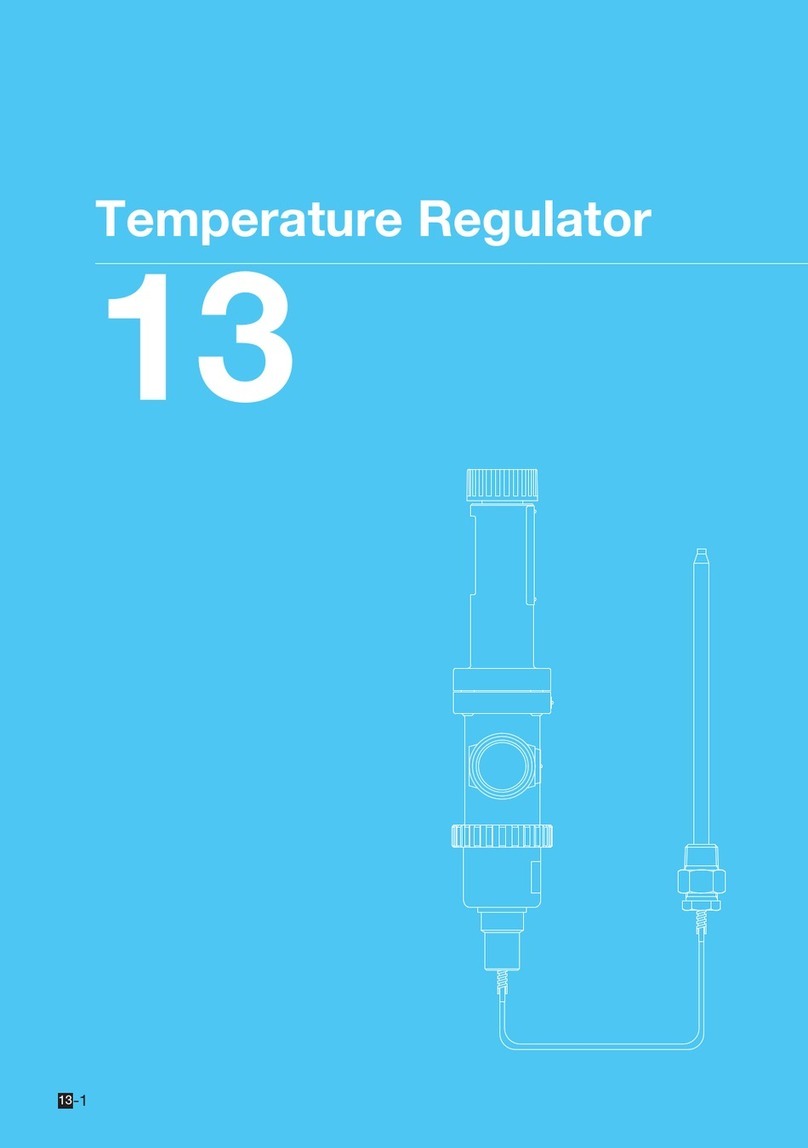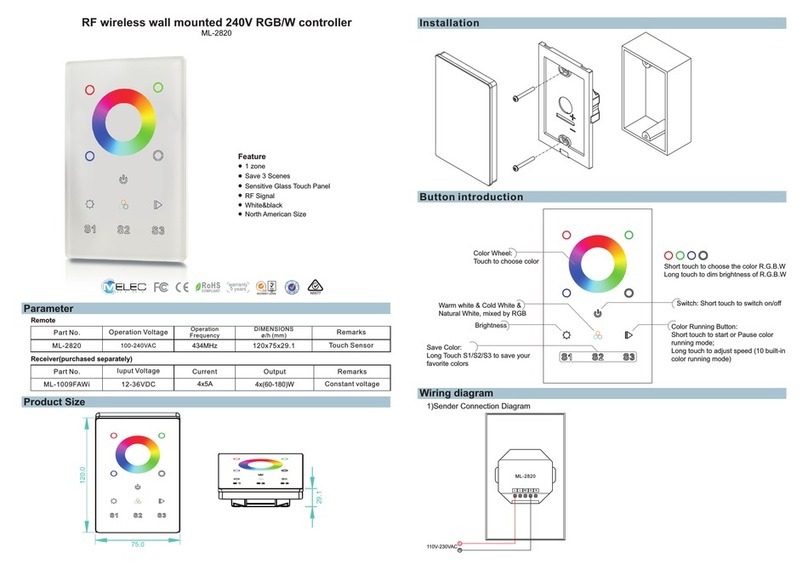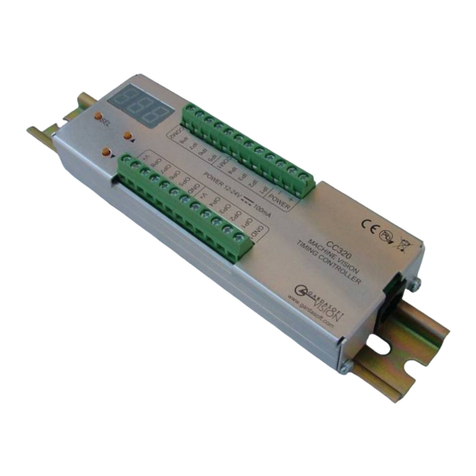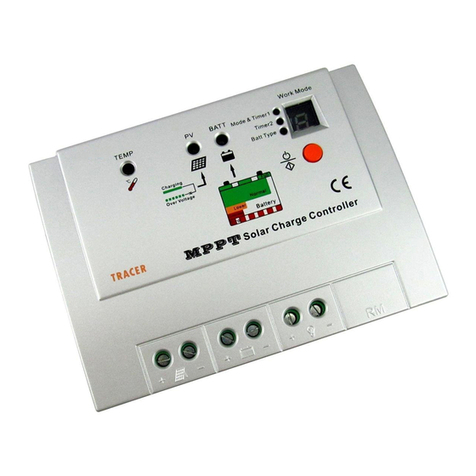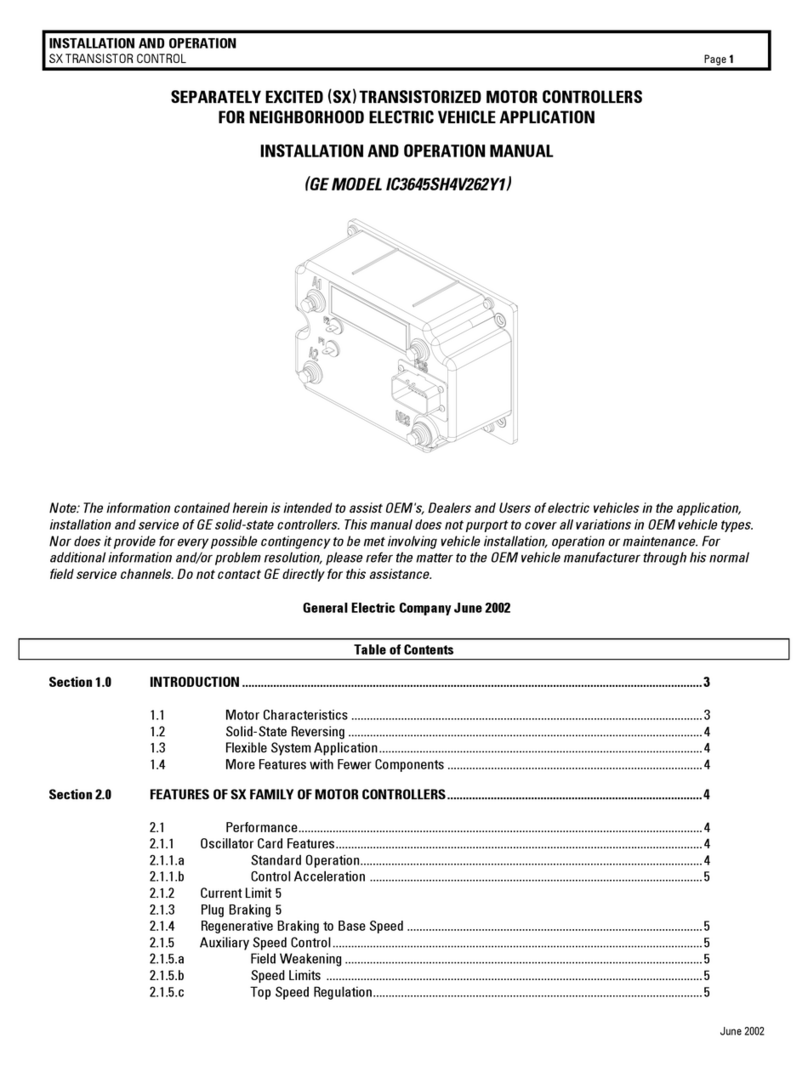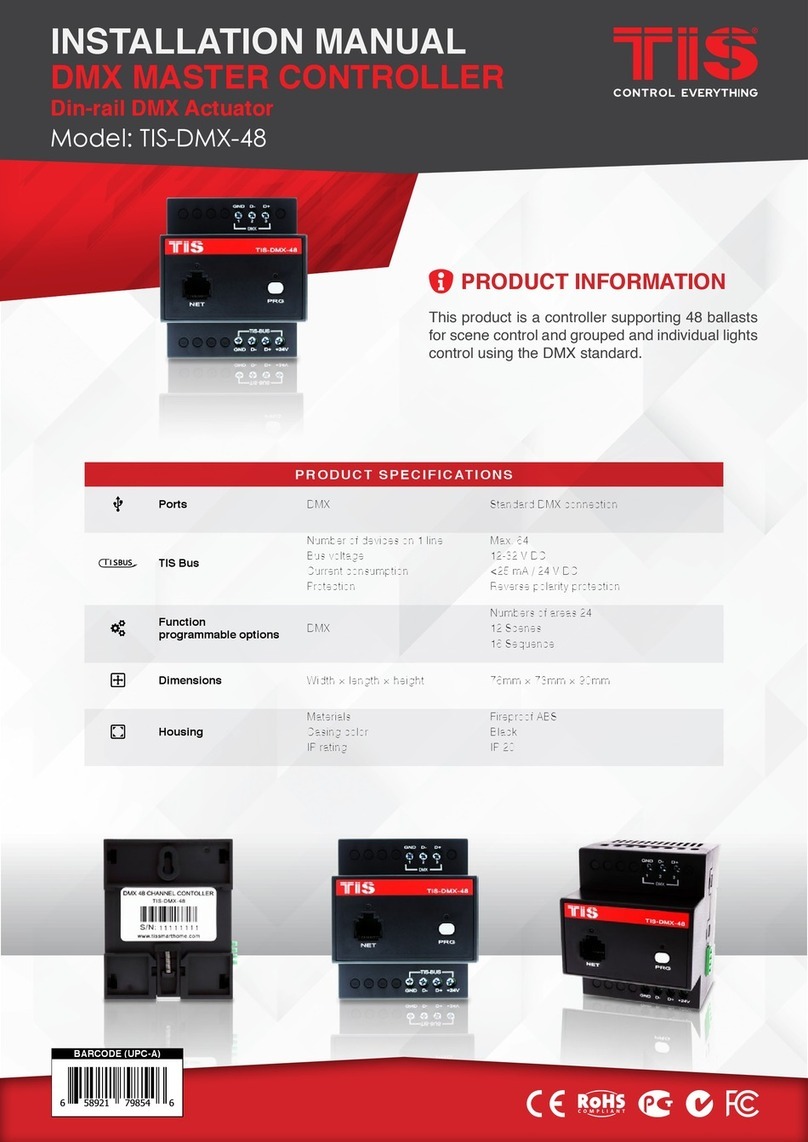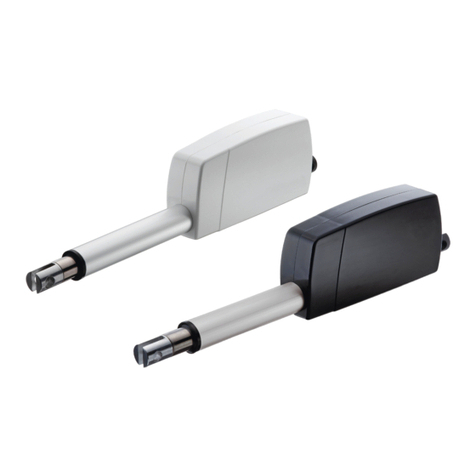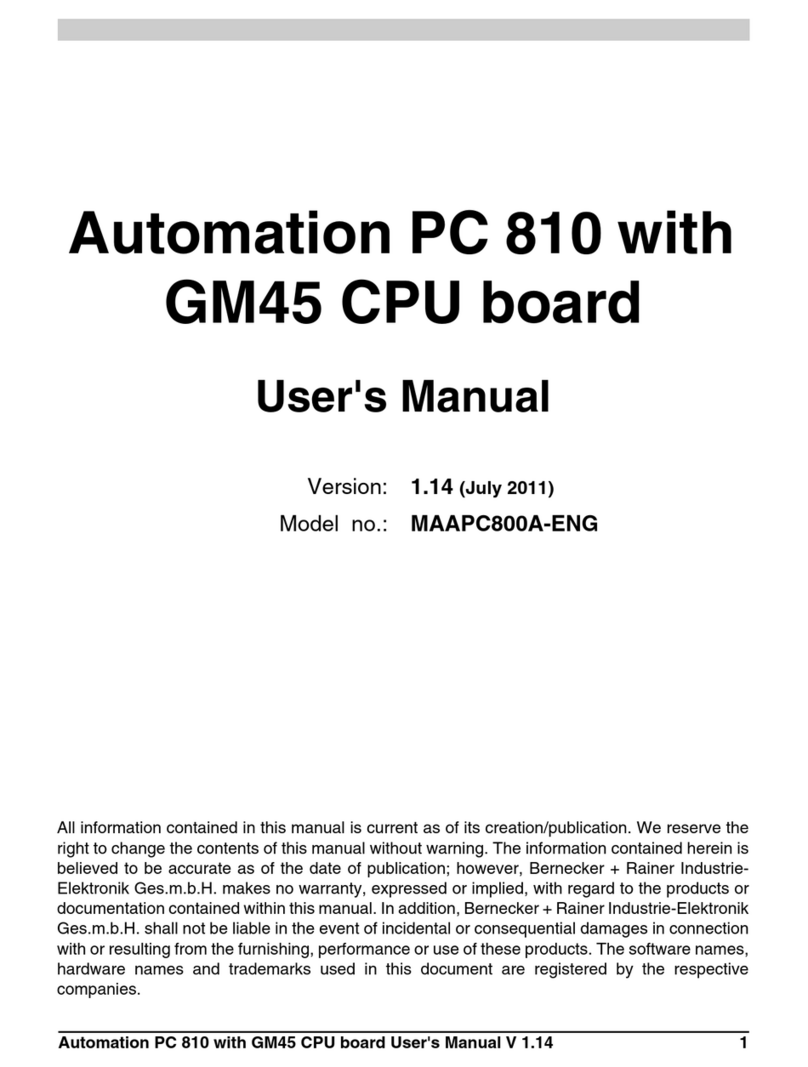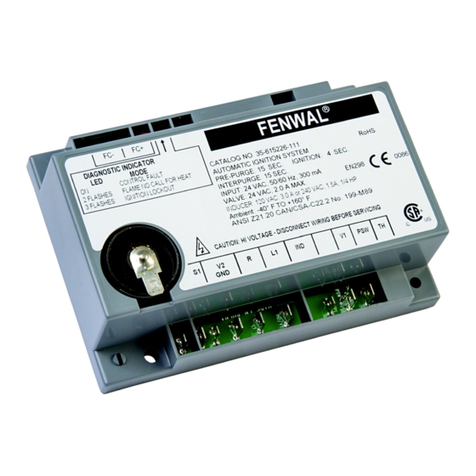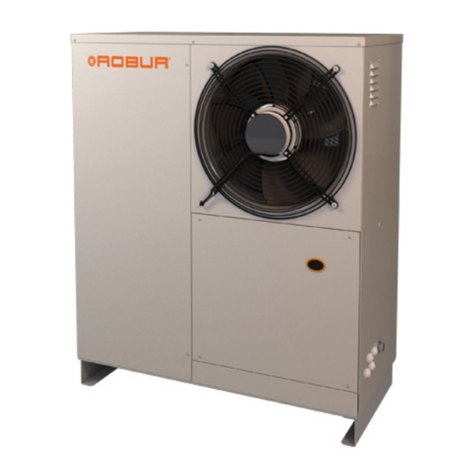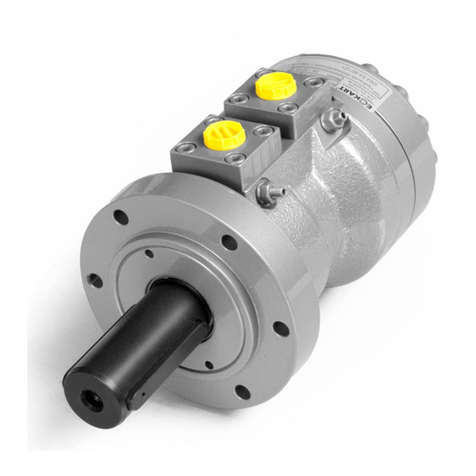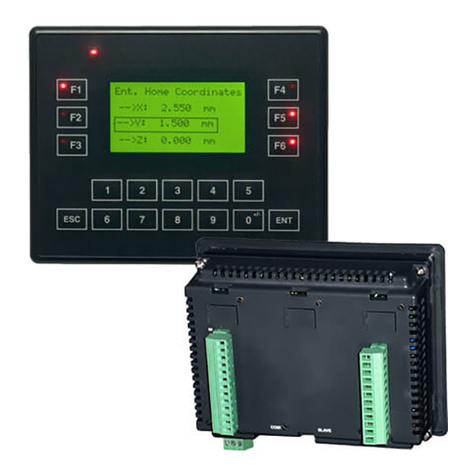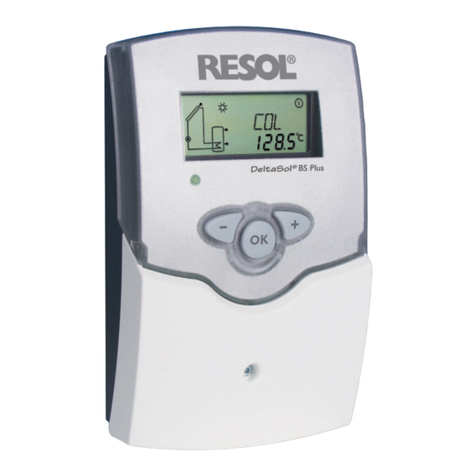Yoshitake OB-30 User manual

■EPDT-213b■
OB-30, OB-30U
OB-31, OB-31U
TEMPERATURE REGULATOR
INSTRUCTION MANUAL
.
Thank you very much for choosing the Yoshitake’s pro uct. To ensure the correct an safe use of the pro uct,
please rea this manual before use. This manual shall be kept with care for future references.
The symbols use in this manual have the following meanings.
Warning
This symbol in icates a potentially hazar ous situation that, if not avoi e ,
coul result in eath or serious injury.
Caution
This symbol in icates a hazar ous situation that, if not avoi e , may result in
minor or mo erate injury or may result in only property amage.
Tab e of Contents
1. Specifications···························································· 1
2. Dimensions and Weights············································· 2
3. Operation································································· 3-4
4. Nominal Size Selection ··············································· 5-6
5. Installation
5.1 Precaution for installation······································· 7
5.2 Installation of body ··············································· 7
5.3 Installation of thermal bulb ····································· 7
5.4 Assembly of body and sensor ································· 8
5.5 Piping example···················································· 8
6. Operating Procedure
6.1 Precaution for operation ········································ 9
6.2 Adjustment ························································· 9
7. Maintenance
7.1 Troubleshooting··················································10
7.2 Precaution for inspection ······································ 11
Warranty Information
MODEL

1
■EPDT-213b■
1
.
Specifications
■Bo y
Mo el OB-30 OB-30U OB-31 OB-31U
Purpose For heating For cooling
Application Steam, Hot water Col water, Refrigerant
Maximum pressure 1.0 MPa (1.7 MPa for hot water) 1.7 MPa
Max. ifferential pressure
1.0 MPa
Valve seat leakage 0.05% or less of rate flow
Max. temperature 185°C
Material
Bo y Bronze
Valve isc PTFE
Valve seat Stainless steel
Connection JIS Rc screwed JIS Rc screwed
(union joint) JIS Rc screwed
JIS Rc screwed
(union joint)
■Sensor
Heate flui Cold and hot water,
Oil, Liquid
Coole flui
Maximum pressure 1.0 MPa
Material
Thermal bulb
C
opper pipe
(Nickel chrome plated)
Capillary tube Copper
Flexible tube Stainless steel
Stan ar capillary length
2 m
Connection JIS R1/2 screwed
•Available with thermal well (stainless steel ma e).
•Available with capillary of 3 or 5 meters.
■Temperature a justing range
Temperature a justing
range (°C)
Withstan
temperature (°C)
0-35 75
25-70 110
40-100 140
60-130 170
70-150 190
•The term “withstan temperature” means the
temperature from pressure resistance of the bellows.
•The maximum temperature of the thermal bulb
for cooling is 100°C.
Caution
Please confirm that the indications on the product correspond with the specifications
of the ordered product model before use.
* If they are different, please contact us without using the product.

2
■EPDT-213b■
2
. Dimensions and Weights
■OB-30, OB-31
OB-30 OB-31
•
Body (mm)
•
Sensor
Nominal Size d L Weight (kg) Capillary length Weight
15A Rc 1/2 75 2.1 2 m 0.6 kg
20A Rc 3/4 80 2.2
25A Rc 1 90 2.4
■OB-30U, OB-31U
OB-30U OB-31U
•
Body (mm)
•
Sensor
Nominal Size d L Weight (kg) Capillary length Weight
15A Rc 1/2 160 3.1 2 m 0.6 kg
20A Rc 3/4 160 3.1
25A Rc 1 160 3.1

3
■EPDT-213b■
3
. Operation
■OB-30, OB-30U
Heating the thermal bulb [20] makes its inner pressure rise, while cooling it makes the pressure lower. The
bellows [14] expands/contracts responding to the change in the internal pressure that is transmitted through
the capillary tube [21], and this allows the valve [4] open/close.
When the temperature of the thermal bulb rises, the bellows expands and applies lifting force to the spindle [7] to
close the valve. When the temperature of the bulb lowers, the downward force applied to the spindle by the spring
[11] opens the valve.
The set temperature can be adjusted by turning the handle [12] to change the load of the spring.
No.
Part name
1
Body
2
Spring chamber
3
Disc
4
Valve
5
Valve seat
6
Balance bellows
7
Spindle
8
Nut
9
Guide
10
Guide
11
Spring
12
Handle
13
Bellows follower
14
Bellows
15
Ring
16
Gasket
17
Bolt
18
Bushing
19
Washer of packing
20
Thermal bulb
21
Capillary tube
*22
Packing
The parts marked “*” are
available as consumable
supply.
Thermal bulb with Thermal
well (stainless steel) does not
need bushing for thermal
bulb.
OB-30
OB-30U

4
■EPDT-213b■
■OB-31, OB-31U
Heating the thermal bulb [20] makes its inner pressure rise, while cooling it makes the pressure lower. The
bellows [14] expands/contracts responding to the change in the internal pressure that is transmitted through
the capillary tube [21], and this allows the valve [4] open/close.
When the temperature of the thermal bulb rises, the bellows expands and applies lifting force to the spindle [7] to
open the valve. When the temperature of the bulb lowers, the downward force applied to the spindle by the spring
[11] closes the valve.
The set temperature can be adjusted by turning the handle [12] to change the load of the spring.
No.
Part name
1
Body
2
Spring chamber
3
Disc
4
Valve
5
Valve seat
6
Balance bellows
7
Spindle
8
Nut
9
Guide
10
Guide
11
Spring
12
Handle
13
Bellows follower
14
Bellows
15
Ring
16
Gasket
17
Bolt
18
Bushing
19
Washer of packing
20
Thermal bulb
21
Capillary tube
*22
Packing
The parts marked “*” are
available as consumable
supply.
OB-31
OB-31U

5
■EPDT-213b■
4
. Nomina Size Se ection
■OB-30, OB-30U
[For steam]
<How to use the chart>
When selecting the nominal size of a temperature regulator whose inlet pressure (P1), outlet pressure
(P2), and steam flow rate are 0.2 MPa, 0.15 MPa, and 20 kg/h, respectively, first find intersection point
(a) of the inlet pressure of 0.2 MPa and the outlet pressure of 0.15 MPa. Trace down vertically from
this intersection point (a) to find intersection point (b) with the flow rate of 20 kg/h. Since this intersection
point (b) lies between nominal sizes 15A and 20A, select the larger one, 20A.

6
■EPDT-213b■
■OB-31, OB-31U
[For water]
<How to use the chart>
When selecting the nominal size of a temperature regulator whose inlet pressure, outlet pressure, and
flow rate are 0.3 MPa, 0.15 MPa, and 1 m3/h, respectively, first find intersection point (a) of the
differential pressure (ΔP) of 0.15 MPa (0.3 MPa – 0.15 MPa) before and after the valve and the flow rate
of 1 m3/h. Since this intersection point (a) lies between nominal sizes 15A and 20A, select the larger one,
20A.
* Chart of the flow rate is a reference value.

7
■EPDT-213b■
5
.
Insta ation
5.1 Precaution for insta ation
Caution
1. Do not disassemble the product unless it is necessary.
* Disassembly may prevent the product from functioning properly.
2. Be sure to remove foreign substances and scale from the piping before connecting the product.
* Foreign substances and scale may prevent the product from functioning properly.
3. Be sure to install a strainer (60 to 80 mesh) at the inlet side of the product.
* Foreign substances and scale may prevent the product from functioning properly.
4. Be sure to install pressure gauges at the inlet and outlet sides of the product for operation check.
* Failure to follow this notice hampers correct temperature regulation.
5. When installing, check the irection an posture of the pro uct.
* Setting the pro uct in a wrong irection or posture prevents the pro uct from functioning properly.
6. Install the product to a place where the ambient temperature does not exceed the set temperature.
* The ambient temperature beyond the set temperature hampers correct temperature regulation.
7. Install a thermometer close to the thermal bulb.
* Failure to follow this notice hampers correct temperature regulation.
8. Make sure that more than 3/4 of the thermal bulb’s total length is in direct contact with the fluid
to be
heated or cooled.
* Failure to follow this notice hampers correct temperature regulation.
9. The bend radius of the capillary tube
should be more than 40 mm. Avoid bending at a sharp angle,
twisting or pulling it with force.
* Failure to follow this not
ice may damage the capillary tube and prevent the product from functioning
properly.
10. Make sure that the capillary tube is not in contact with steam piping.
* Failure to follow this notice hampers correct temperature regulation.
11. Do not apply excessive loa , torque or vibration to the pro uct.
* Failure to follow this notice may result in malfunction or a drastically shortened service life of the
product.
12. The bo y an the sensor are separately package .
5.2 Insta ation of body
(1) Be sure not to lose the bellows follower [13] (attache component).
(2) Install the bo y to horizontal piping with the han le [12] facing upwar .
(3) Check the irection of the pro uct so that the flui flowing an the arrow marke on the bo y [1] are
in the same irection.
(4) Be sure to install pressure gauges, a strainer an a bypass line to the piping. (See “7.5 Piping
example”)
(5) The pressure of heating or cooling flui shoul be re uce with a re ucing valve if it excee s the
maximum pressure.
(6) Before stopping operation of the product for an extended period, completely discharge the condensate
inside the product and piping, and close the stop valves installed at before and after the product.
(7) Before leading fluid into the product, be sure to remove foreign substances and scale from the piping
completely by using a bypass line.
5.3 Insta ation of therma bu b
(1) Although the thermal bulb [20] can be mounte in any posture, make sure that more than 3/4 of its
total length is in irect contact with the flui to be heate or coole .
(2) Screw in the bushing [18] first, then use the washer of packing [19] to secure the thermal bulb.
(3) The bend radius of the capillary tube [21] should be more than 40 mm. Avoid bending at a sharp angle,
twisting or pulling it with force.
(4) Install a thermometer close to the thermal bulb.
(5) When inserting the thermal bulb into the piping for temperature etection, it shoul be installe at a
point where the circulation is best.
* The thermal bulb is ma e of copper an can be easily bent if it bumps against something. Han le
with care.

8
■EPDT-213b■
Thermal
bulb
After
cooler
Stop valve Strainer
Stop valve
Capillary tube
Bypass stop valve
Water
Water
Air
Air
OB-31
Temperature
regulator
Pressure
gauge
Steam
Stop
valve
Strainer
OB-30
Temperature
regulator
Thermometer
Safety
relief
valve Hot water
Water
Storage tank
Heating coil
Thermal bulb
Strainer
Stop
valve
Trap
Bypass stop valve
Capillary tube
5.4 Assemb y of body and sensor
Place the bellows follower [13], which is package with the
bo y, into the bellows [14] with its flat surface facing ownwar
an then screw it into the lower surface of the bo y [1] by the
ring [15].
It makes the assembly easier to loosen the han le [12] to
irection of the “L” position. Be sure not to lose the bellows
follower because the pro uct oes not function properly without
it.
5.5 Piping examp e
■OB-30, OB-30U (for heating)
■OB-31, OB-31U (for cooling)
Bo y [1]
Bellows follower [13]
Ring [15]
Bellows [14]
Drain

9
■EPDT-213b■
6
.
Operating Procedure
6.1 Precaution for operation
Caution
1.
Before leading fluid into the product,
close the stop valves at the inlet and outlet of the product and remove
foreign substances and scale from the piping completely by using a bypass line. When blowing fluid
via
the bypass line, keep fluid temperature from exceeding the withstand temperature of the product.
* Failure to follow this notice prevents the product from functioning properly due to the ingress of foreign
substances and scale into the product.
Applying fluid exceeding the withstand temperature makes the
spindle bent and unusable.
2. A just set temperature while watching the thermometer with enough time.
* Failure to follow this notice hampers correct temperature regulation.
3. Before stopping operation of the product for an extended period, completely discharge the fluid
inside the
product and piping, and close the stop valves installed at before and after the product.
* Failure to follow this notice may cause malfunction due to rusting inside the product and piping.
4. If condensate accumulates while the product closes, install a trap to discharge the condensate.
*Failure to follow this notice may cause malfunction due to rusting inside the product and the pipes.
6.2 Adjustment
Taking a wrong a justing proce ure may cause hunting, scale problems or water hammer, an can heavily
amage the main parts of the pro uct. Be sure to follow the proce ure below.
1. Close the stop valves at the inlet an outlet si es of the pro uct. Open the bypass stop valve an
blow flui through the bypass line with enough time. After ischarging, be sure to close the bypass
stop valve.
2. Turn the han le [12] an move the in icator to the esire temperature position on the scale. To
raise the temperature, turn the han le clockwise (to irection of the “H” position). To lower the
temperature, turn it counterclockwise (to irection of the “L” position).
3. Slowly open the inlet stop valve to its full open position, an then, open the outlet stop valve little
by little to its full open position.
4. A just the han le till the esire temperature is obtaine while watching the thermometer with
enough time.
[Scale rea ing an set temperature]
Scale rea ing OB-30, OB-30U (for heating)
0-35°C 25-70°C 40-100°C 60-130°C 70-150°C
0-10°C 14°C 28°C ––
1 5°C 30°C 47°C 58°C 67°C
220°C 46°C 66°C 81°C 91°C
331°C 62°C 86°C 105°C 119°C
442°C 78°C 106°C 132°C 162°C
Scale rea ing OB-31, OB-31U (for cooling)
0-35°C 25-70°C 40-100°C
0–––
1-14°C 11°C 23°C
2 9°C 38°C 55°C
332°C 65°C 94°C
455°C 98°C 141°C
•The tables above show the set temperature per scale rea ing as a gui e. Because the
temperature varies slightly accor ing to the con itions of use, a just the han le till the esire
temperature is obtaine .
Warning
When the pro uct is use for hot flui , o not touch the pro uct with bare han s.
* The pro uct having hot flui may scal your skin.

10
■EPDT-213b■
7
. Maintenance
7.1 Troubleshooting
■
OB-30, OB-30U
Trouble Cause Remedy
Temperature does
not rise.
1.
Inadequate adjustment.
1.
Readjust according to
“
8.2
Adjustment
”
on page
8
.
2.
Insufficient drainage from the trap
of heat exchanger, etc.
2.
Check the trap and replace it if
necessary.
Temperature rises
excessively.
1.
Inadequate adjustment.
1.
Readjust according to
“
8.2
Adjustment
”
on page 8.
2.
Foreign substances stuck or
damage on the disc [3] and valve
seat [5].
2.
R
emove the foreign substances. If
there is damage on the parts, please
contact us to disassemble the product
and replace the part
s
.
3.
The thermal bulb [2
0
] or bellows
[14] is damaged.
3.
Replace the sensor.
Large error
of
temperature
control.
1.
The
thermal bulb
[2
0
] and
thermometer are
installed in wrong
position
s
.
1.
Reinstall
them
at point
s
where the
circulation is best.
2.
Inlet pressure is too high.
2.
W
h
en steam consumption is small
,
lower the inlet pressure for better
temperature control.
Outside leakage.
1.
Leakage from the gasket [16
].
1.
Please contact us to retighten the
gasket, or disassemble the product to
replace the part.
2.
Balance bellows [6] is damaged.
2.
Please contact us to disassemble
the
product
and replace the part.
■OB-31, OB-31U
Trouble Cause Remedy
Temperature does
not lower.
1.
Inadequate adjustment.
1.
Readjust according to
“
8.2
Adjustment
”
on page 8.
2.
The thermal bulb [20] or bellows
[14] is damaged.
2.
Replace the sensor.
Temperature
lowers
excessively.
1.
Inadequate adjustment.
1.
Readjust according to
“
8.2
Adjustment” on page 8.
2.
Foreign substances stuck or
damage on the disc [3] and valve
seat [5].
2.
Remove the foreign substances. If
there is damage on the parts, please
contact us to disassemble the product
and replace the parts.
Large error
of
temperature
control.
1.
The
thermal bulb
[20] and
thermometer are installed in wrong
positions.
1.
Reinstall them at points where the
circulation is best.
2.
Inlet pressure is too high.
2.
W
h
en steam consumption is small,
lower the inlet pressure for better
temperature control.
Outside leakage.
1.
Leakage from the gasket [16].
1.
Please contact us to retighten the
gasket, or disassemble the product to
replace the part.
2.
Balance bellows [6] is damaged.
2.
Please contact us to disassemble the
product and replace the part.

11
■EPDT-213b■
7.2 Precaution for inspection
Caution
1. Do not disassemble the bellows while the thermal bulb is heated.
* Failure to follow this notice may damage the bellows and prevent the product from functioning properly.
2. Do not give any shock to the thermal bulb.
Warning
Inspection must be done by experienced professional or valve manufacturer.
Completely discharge the pressure inside of the product, piping and equipment prior
to disassembly and inspection. When fluid is hot, cool down the product to the
condition that it can be touched with bare hands.
* Failure to follow this notice may result in scalds, injury or contamination on the
surroundings due to the residual pressure.

PDD-046f
Warranty Information
1. Limited warranty
This product has been manufactured using highly-advanced techniques and subjected to
strict quality control. Please be sure to use the product in accordance with instructions on
the manual and the label attached to it.
Yoshitake warrants the product to be free from any defects in material and workmanship
under normal usage for a period of one year from the date of receipt by the original user, but
no longer than 24 months from the date of shipment from Yoshitake’s factory.
2. Parts supply after product discontinuation
This product may be subject to discontinuation or change for improvement without any prior
notice. After the discontinuation of the product, Yoshitake supplies the repair parts for 5
years otherwise individually agreed.
3. This warranty does not cover the damage due to any of below:
(1) Valve seat leakage or malfunction caused by foreign substances inside piping.
(2) Improper handling or misuse.
(3) Improper supply conditions such as abnormal water pressure/quality.
(4) Water scale or freezing.
(5) Trouble with power/air supply.
(6) Any alteration made by other than Yoshitake.
(7) Use under severe conditions deviating from the design specifications
(
e.g. in case of corrosion due to outdoor use).
(8) Fire, flood, earthquake, thunder and other natural disasters.
(9) Consumable parts such as O-ring, gasket, diaphragm and etc.
Yoshitake is not liable for any damage or loss caused by malfunction or defect of the product.
Other manuals for OB-30
1
This manual suits for next models
3
Table of contents
Other Yoshitake Controllers manuals
